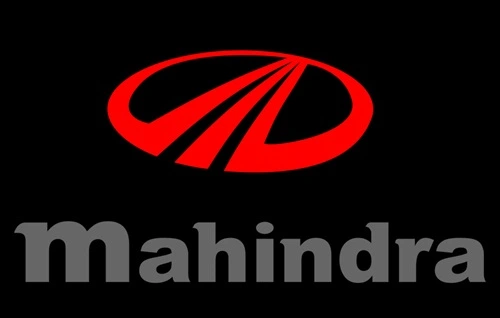Mahindra & Mahindra Ltd. (M&M), the flagship company of the Mahindra Group, is one of India’s most admired and diversified multinational corporations. From rugged SUVs that dominate Indian roads to tractors that empower farmers across continents, M&M has emerged as a symbol of innovation, resilience, and purpose-driven growth.
As of 2025, Mahindra & Mahindra has firmly established its presence in automotive, farm equipment, electric vehicles (EVs), financial services, logistics, and real estate. The company’s market capitalization has crossed ₹2.3 lakh crore, backed by a strong product portfolio, global footprint, and a bold push into the electric mobility segment. With brands like Scorpio-N, Thar, XUV700, Bolero, and Treo (EV), Mahindra has become a household name in both urban and rural India.
In this SWOT analysis, we explore the strategic strengths, weaknesses, opportunities, and threats shaping Mahindra & Mahindra’s trajectory as it gears up to lead India’s next phase of sustainable and inclusive mobility.

Strengths: Key Drivers of Mahindra’s Success
1. Market Leadership in SUV and Tractor Segments
Mahindra is a leader in the utility vehicle and tractor market in India. Its dominance in SUVs like Bolero, Thar, Scorpio-N, and XUV700 continues to set benchmarks in both volume and performance. In the farm equipment sector, M&M is India’s No. 1 tractor brand and one of the largest globally by volume.
2. Strong Brand Equity and Rural Connect
With decades of trusted performance, Mahindra enjoys immense goodwill in rural India. Its vehicles and tractors are seen as reliable, rugged, and built for Indian conditions. The “Rise” philosophy has further enhanced its reputation as a brand with purpose.
3. Diversified Business Portfolio
Mahindra’s diversified structure—across automotive, farm equipment, EVs, defense, aerospace, logistics, finance, and IT—helps mitigate sector-specific risks and drives synergy between verticals.
4. Innovation and Product Engineering
M&M invests significantly in design and R&D, evident in its futuristic models like e8 and BE.05 EVs, as well as modern tractor technology. Its Mahindra Research Valley (MRV) in Chennai and North American R&D centres are powering global innovation.
5. Strategic Partnerships and Global Presence
Mahindra has global operations in South Asia, Africa, North America, and Europe. Collaborations with Ford (earlier), Mitsubishi Agricultural Machinery, and recent alliances for EV battery tech demonstrate its focus on global expansion and tech adoption.
Weaknesses: Internal Limitations and Challenges
1. Overdependence on Domestic Market
A significant portion of M&M’s revenue comes from India, particularly the rural and semi-urban markets. Any slowdown in India’s rural economy or monsoon disruptions can affect its core tractor and UV sales.
2. Lag in Passenger EV Adoption
While M&M is gaining ground in the electric three-wheeler and commercial vehicle segment (Treo, e-Alfa), it has been slower than competitors like Tata Motors in launching electric passenger vehicles at scale. Its EV portfolio is promising but still in the early stage of rollout.
3. High Competition in Core Segments
The SUV and tractor markets have become intensely competitive with players like Tata, Maruti Suzuki, Hyundai, and John Deere aggressively capturing market share. This puts pressure on margins and market dominance.
4. Underperformance of Certain Subsidiaries
Some of M&M’s ventures, such as SsangYong (divested) and Mahindra Electric Mobility, have faced operational challenges and losses in the past, leading to write-downs or restructuring.
Opportunities: Growth Catalysts for Mahindra & Mahindra
1. Electric Vehicle Revolution
India’s EV adoption is gaining speed. With ₹10,000+ crore PLI (Production Linked Incentive) schemes and incentives for clean mobility, Mahindra’s investment in EV brands (XUV.e and BE), battery partnerships, and new EV plants positions it for strong growth in this space.
2. Smart Farm and AgriTech Solutions
M&M can expand from tractors into precision farming, IoT-based farm solutions, agri-finance, and rural mechanization, offering bundled products and services that improve farmer incomes.
3. Export Growth in Africa, ASEAN, and Latin America
Demand for rugged, affordable SUVs and tractors is rising in developing economies. M&M’s value-for-money proposition can help it scale its international footprint and reduce overreliance on India.
4. Sustainability and ESG Initiatives
Mahindra has committed to being carbon neutral by 2040, and its sustainability-led initiatives—from green manufacturing to renewable energy sourcing—are already strengthening its ESG credentials and investor appeal.
5. Digital and Connected Mobility
With increasing adoption of ADAS, infotainment, connected car tech, and mobile-first services, Mahindra can differentiate through digital-first product offerings and subscription models.
Threats: External Challenges and Market Risks
1. Economic and Monsoon Dependency
Mahindra’s rural sales are closely linked to monsoons and agricultural output. Erratic rainfall or macroeconomic pressures can dampen consumer spending and loan disbursal in rural areas.
2. Policy and Regulatory Uncertainty
Rapid shifts in emissions norms, EV regulations, and safety standards require constant adaptation and can increase compliance costs. Delay in EV infrastructure development also hampers faster market growth.
3. Supply Chain Disruptions and Cost Volatility
Global shortages of semiconductors, steel, and lithium (for EVs), along with shipping constraints, can impact production schedules and inflate input costs, especially in the automotive segment.
4. Aggressive Competitor Strategies
Competitors like Tata Motors, Maruti Suzuki, and international players are rapidly investing in EVs, hybrids, and smart vehicles. Mahindra must keep pace in innovation and affordability to retain its edge.
Conclusion: Mahindra & Mahindra – Boldly Driving Toward a Sustainable, Electric Future
Mahindra & Mahindra stands out as one of India’s most resilient, diversified, and purpose-driven conglomerates, playing a key role in transforming mobility, agriculture, and clean energy in India and abroad. Its powerful legacy in rural markets, combined with its bold bets on electric vehicles, smart farming, and global expansion, marks it as a company ready for the future.

Meet Suhas Harshe, a financial advisor committed to assisting people and businesses in confidently understanding and managing the complexities of the financial world. Suhas has shared his knowledge on various topics like business, investment strategies, optimizing taxes, and promoting financial well-being through articles in InvestmentDose.com


